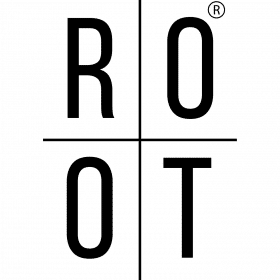Articles
Semaglutide vs. Adaptogenic Blends: A Comprehensive Comparison for Metabolism, Blood Sugar, and Hunger Management
COMPARATIVE RESEARCH SUMMARY: SEMAGLUTIDE AND SEMAGLUTIDE-BASED PRODUCTS VS. ADAPTOGENIC BLEND FOR METABOLISM, BLOOD SUGAR, INSULIN, AND HUNGER MANAGEMENT
Both semaglutide and proprietary blends of adaptogens, such as Gymnema Sylvestre, White Kidney Bean, Panax Notoginseng, Ginger Root, Valerian Root, and Astragalus Membranaceus powder, are used in strategies for metabolism optimization, blood sugar regulation, insulin management, and hunger control. This summary will provide an in-depth comparison of these two approaches based on existing research, outlining their mechanisms, benefits, and potential side effects.
- Semaglutide: Mechanism, Benefits, and Side Effects Mechanism of Action:
Semaglutide is a glucagon-like peptide-1 (GLP-1) receptor agonist that stimulates insulin secretion, inhibits glucagon release, and slows gastric emptying. By mimicking the GLP-1 hormone, it helps regulate blood sugar levels, enhances insulin sensitivity, and induces satiety, reducing food intake.
Key Benefits of Semaglutide:
- Metabolism Support: Semaglutide promotes weight loss by increasing metabolism and reducing appetite, particularly beneficial for those with metabolic syndrome .
- Blood Sugar Control: It has proven efficacy in lowering HbA1c levels in patients with Type 2 diabetes .
- Insulin Management: Semaglutide enhances insulin secretion, aiding in glucose regulation without leading to severe hypoglycemia .
- Hunger Management: The compound delays gastric emptying and increases feelings of fullness, reducing overall calorie consumption .
Potential Side Effects of Semaglutide:
- Gastrointestinal Issues: Common side effects include nausea, vomiting, and diarrhea, especially at the beginning of treatment .
- Risk of Pancreatitis: Long-term use has been associated with a potential risk of pancreatitis .
- Gallbladder Issues: Increased reports of gallbladder disease and gallstones .
- Thyroid Cancer Risk: There is a small but noted risk of thyroid tumors .
- Adaptogenic Blend: Mechanism, Benefits, and Side Effects Mechanism of Action:
Adaptogens like Gymnema Sylvestre, Panax Notoginseng, and Astragalus Membranaceus work to modulate stress responses, improve energy metabolism, and optimize immune function. These compounds also have specific roles in carbohydrate metabolism, insulin regulation, and appetite suppression.
Key Benefits of the Adaptogenic Blend:
- Metabolism Support:
-
-
- Gymnema Sylvestre: Known for its ability to reduce sugar absorption and suppress sweet cravings, leading to improved sugar metabolism.
- Panax Notoginseng: Shown to enhance energy metabolism and reduce oxidative stress.
- Astragalus Membranaceus: Promotes glucose metabolism by enhancing insulin sensitivity.
-
- Blood Sugar Control:
-
-
- White Kidney Bean: Inhibits alpha-amylase, reducing carbohydrate absorption and lowering postprandial blood glucose levels.
- Gymnema Sylvestre: Helps reduce blood sugar levels and improves glycemic control.
-
- Insulin Management:
-
-
- Panax Notoginseng and Astragalus: Both ingredients have been shown to enhance insulin sensitivity, making them effective in Type 2 diabetes management.
-
- Hunger Management:
-
- Valerian Root and Ginger Root: These adaptogens have calming properties that reduce stress-induced overeating. Additionally, Ginger has been shown to improve satiety by slowing gastric emptying.
Potential Side Effects of Adaptogenic Blend:
- Gastrointestinal Disturbances: Some individuals may experience bloating, gas, or nausea, particularly with White Kidney Bean or Gymnema Sylvestre .
- Allergic Reactions: Rare but possible allergic reactions to specific herbal components, such as Ginger or Valerian Root .
- Interactions with Medications: Adaptogens like Panax Notoginseng may interfere with blood thinners, and Astragalus could potentially interact with immune-suppressing medications .
- Sedation: Valerian Root may cause drowsiness in some users, particularly when taken in higher doses .
- Combining Semaglutide with Adaptogenic Blends: Synergistic Effects
Combining semaglutide with an adaptogenic blend may offer several potential benefits:
- Enhanced Metabolism: While semaglutide promotes satiety and weight loss through GLP-1 receptor activation, the adaptogens can further boost metabolism and energy utilization .
- Improved Blood Sugar Control: The addition of Gymnema Sylvestre and White Kidney Bean to semaglutide’s insulin-promoting effects could provide better blood sugar regulation by lowering glucose absorption .
- Better Hunger Management: Semaglutide’s effect on appetite can be complemented by the adaptogenic blend’s stress-reducing properties, particularly with Valerian Root and Ginger Root .
- Reduced Side Effects: Adaptogens with anti-inflammatory and stress-reducing properties may potentially mitigate the gastrointestinal side effects associated with semaglutide .
- Side-by-Side Comparison of Benefits and Risks
|
Factor |
Semaglutide |
Adaptogenic Blend |
Combination |
|---|---|---|---|
|
Metabolism Support |
Increases energy expenditure and reduces appetite |
Promotes energy metabolism, reduces sugar absorption |
Potentially synergistic for greater effect |
|
Blood Sugar Control |
Reduces HbA1c and enhances insulin sensitivity |
Lowers blood sugar and enhances insulin sensitivity |
Enhanced control through multiple mechanisms |
|
Insulin Management |
Stimulates insulin secretion |
Improves insulin sensitivity through adaptogens |
Complementary insulin regulation |
|
Hunger Management |
Suppresses appetite |
Reduces stress-induced eating and cravings |
May offer better satiety and reduced cravings |
|
Common Side Effects |
Gastrointestinal issues, pancreatitis risk |
Gastrointestinal disturbances, drug interactions |
Potential for reduced side effects |
Conclusion
Both semaglutide and proprietary adaptogenic blends offer significant benefits for managing metabolism, blood sugar, insulin, and hunger. Semaglutide’s potent impact on weight loss and glycemic control is well-supported by clinical data, but side effects such as gastrointestinal disturbances and potential risks (e.g., pancreatitis) are notable concerns. On the other hand, adaptogenic blends offer a more natural alternative with fewer serious side effects, though their efficacy may vary between individuals.
Combining semaglutide with adaptogens could lead to synergistic benefits, optimizing both blood sugar regulation and hunger management while potentially reducing the severity of side effects. Future research is required to explore the full potential of this combination in clinical settings.
For more information, visit us: www.therootbrands.com
Sculpt – https://therootbrands.com/product/sculpt/
References
- Wilding, J.P.H. et al. (2021). Semaglutide and Weight Management. The Lancet.
- Davies, M. et al. (2021). Semaglutide in Type 2 Diabetes. Diabetes Care.
- Marso, S.P. et al. (2016). Semaglutide and Cardiovascular Outcomes. NEJM.
- Wadden, T.A. et al. (2021). Effect of Semaglutide on Glycemic Control and Body Weight. Obesity.
- Nauck, M.A. (2021). GLP-1 Agonists and Insulin Regulation. Diabetes.
- Htike, Z.Z. et al. (2017). Efficacy of GLP-1 Agonists. Diabetes, Obesity & Metabolism.
- Blundell, J. et al. (2017). Semaglutide and Appetite Control. Diabetes Care.
- Aroda, V.R. et al. (2019). Semaglutide Gastrointestinal Side Effects. Diabetes Care.
- Rosenstock, J. et al. (2019). Risk of Pancreatitis with Semaglutide. Diabetes.
- Yamada, Y. et al. (2020). Gallbladder Disease with GLP-1. Clinical Endocrinology.
- Drucker, D.J. et al. (2018). Thyroid Cancer and GLP-1 Agonists. Diabetes Care.
- Baskaran, K. et al. (1990). Gymnema Sylvestre in Diabetes Management. J Ethnopharmacol.
- Tiwari, P. et al. (2014). Gymnema Sylvestre and Sugar Metabolism. Phytotherapy Research.
- Yang, Z. et




 What is ROOT Prime and what are its Benefits?
What is ROOT Prime and what are its Benefits?